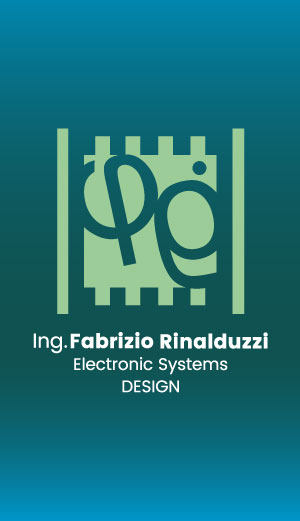Roadrunner technical documentation Buy
Use 2.8 inch TFT displays on SPI ports
Unfortunately on SAMD2 architecture is not available the driver to manage the resistive touch available on XTERM-01
- Kernel used: 4.19.78
- Rootfs used: Buildroot 2020.02
Kernel menuconfig
Enable the kernel SPI drivers as explained here:
Enable the Kernel support for small TFT LCD with ILI9341 LCD Controller
Device Drivers --->
[*] Staging drivers --->
<*> Support for small TFT LCD display modules --->
<*> FB driver for the ILI9341 LCD Controller
Example 1: One display on each SPI
In this example we will use our XTERM-01 wired to Berta Board D2 evaluation kit using the port SPI0 and SPI1 lines (MOSI, MISO, CLK and CS) plus some extra signals required by the display (reset and data/command).

FIRST DISPLAY ON SPI0 SECOND DISPLAY
| Signal | Berta D2 | XTerm 0 | | Signal | Berta D2 | XTerm 1 |
|------------|----------|---------| |------------|----------|---------|
| SPI0 MOSI | PA15 | J4.8 | | SPI1 MOSI | PC2 | J4.8 |
| SPI0 MISO | PA16 | J4.10 | | SPI1 MISO | PC3 | J4.10 |
| SPI0 SCLK | PA14 | J4.7 | | SPI1 SCLK | PC1 | J4.7 |
| SPI0 CS0 | PA17 | J4.25 | | SPI1 CS0 | PC4 | J4.25 |
| | | | | | | |
| Reset | PA13 | J4.33 | | Reset | PC5 | J4.33 |
| D/C | PA12 | J4.31 | | D/C | PC6 | J4.31 |
| | | | | | | |
| 3V3 | 3V3 | J4.5 | | 3V3 | 3V3 | J4.5 |
| GND | GND | J4.9 | | GND | GND | J4.9 |
!------------|----------|---------| |------------|----------|---------|
Device tree definition
/* Enable the SPI port 0 for a display selected by CS0 signal */
spi0: spi@f8000000 {
pinctrl-names = "default";
pinctrl-0 = <&pinctrl_spi0_default>;
status = "okay";
device@0 {
rotate = <90>;
bgr;
fps = <30>;
compatible = "ilitek,ili9341";
spi-max-frequency = <50000000>;
reg = <0>;
regwidth = <8>;
buswidth = <8>;
verbose = <3>;
reset-gpios = <&pioA PIN_PA13 0>;
dc-gpios = <&pioA PIN_PA12 0>;
};
};
/* Enable the SPI port 1 for a display selected by CS0 signal */
spi1: spi@fc000000 {
pinctrl-names = "default";
pinctrl-0 = <&pinctrl_spi1_default>;
status = "okay";
device@0 {
rotate = <90>;
bgr;
fps = <30>;
compatible = "ilitek,ili9341";
spi-max-frequency = <50000000>;
reg = <0>;
regwidth = <8>;
buswidth = <8>;
verbose = <3>;
reset-gpios = <&pioA PIN_PC5 0>;
dc-gpios = <&pioA PIN_PC6 0>;
};
};
Example 2: Two displays on the same each SPI
In this example we will use our XTERM-01 wired to Berta Board D2 evaluation kit using the port SPI1 lines (MOSI, MISO, CLK, CS0 and CS1) plus some extra signals required by the display (reset and data/command).

The CS0 and CS1 signals will be used to select the display
| Signal | Berta D2 | XTerm 0 | XTerm 1 |
|------------|----------|---------|---------|
| SPI1 MOSI | PC2 | J4.8 | J4.8 |
| SPI1 MISO | PC3 | J4.10 | J4.10 |
| SPI1 SCLK | PC1 | J4.7 | J4.7 |
| | | | |
| SPI1 CS0 | PC4 | J4.25 | |
| Reset 0 | PA13 | J4.33 | |
| D/C 0 | PA12 | J4.31 | |
| | | | |
| SPI1 CS1 | PC5 | | J4.25 |
| Reset 1 | PA11 | | J4.33 |
| D/C 1 | PA8 | | J4.31 |
| | | | |
| 3V3 | 3V3 | J4.5 | J4.5 |
| GND | GND | J4.9 | J4.9 |
!------------|----------|---------|---------|
Device tree definition
/* Enable the SPI port 1 */
spi1: spi@fc000000 {
pinctrl-names = "default";
pinctrl-0 = <&pinctrl_spi1_default>;
status = "okay";
/* Display 0 selected by CS0 */
device@0 {
rotate = <90>;
bgr;
fps = <30>;
compatible = "ilitek,ili9341";
spi-max-frequency = <50000000>;
reg = <0>;
regwidth = <8>;
buswidth = <8>;
verbose = <3>;
reset-gpios = <&pioA PIN_PA13 0>;
dc-gpios = <&pioA PIN_PA12 0>;
};
/* Display 0 selected by CS1 */
device@1 {
rotate = <90>;
bgr;
fps = <30>;
compatible = "ilitek,ili9341";
spi-max-frequency = <50000000>;
reg = <1>;
regwidth = <8>;
buswidth = <8>;
verbose = <3>;
reset-gpios = <&pioA PIN_PA11 0>;
dc-gpios = <&pioA PIN_PA8 0>;
};
};
Frame buffer
The display will be managed by Linux using these two devices:
/dev/fb0
/dev/fb1
It will be initializated at startup.
Using QT5
The QT5 applications can select on which display send the output in this form:
/usr/lib/qt/examples/widgets/widgets/calculator/calculator -platform linuxfb:fb=/dev/fb0
/usr/lib/qt/examples/widgets/widgets/calculator/calculator -platform linuxfb:fb=/dev/fb1

Links
- How to use the SPI ports
- Linux Framebuffer drivers for small TFT LCD display modules
- XTERM-01 - 2.8 inch TFT display with resistive touch for Arietta G25
- XTERM-01 Schematic
- IC ILI9341 datasheet
- Build a QT5 application on Buildroot
Related products

- CPU Microchip SAMA5D27
- Cortex A5 @ 500 MHz
- Low power consumption:
Suspend to RAM mode 10mW
Full speed: 396mW - Debian, Buildroot and Yocto Linux
- Fully open source drivers

- Low power consumption
- Two USB Host 2.0 ports (one configurable as USB client on the USB-C connector)
- One 10/100 Mbit/s Lan port
- 2 Acme Sensor ports
- Huge set of GPIOS, SPI, I2C and serial lines






